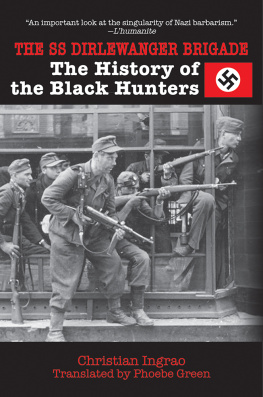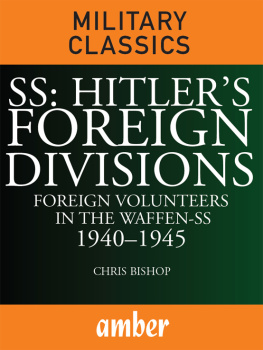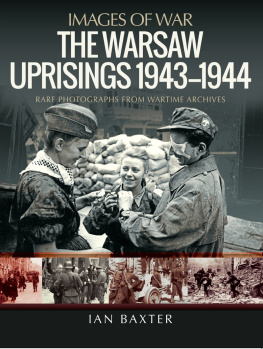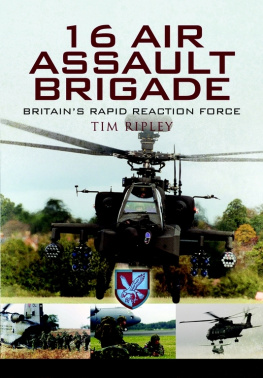THE SS DIRLEWANGER
BRIGADE
The History of the Black Hunters
Christian Ingrao
Translated from the French by Phoebe Green

Copyright 2011 Christian Ingrao
Translation 2011 Phoebe Green
All Rights Reserved. No part of this book may be reproduced in any manner without the express written consent of the publisher, except in the case of brief excerpts in critical reviews or articles. All inquiries should be addressed to Skyhorse Publishing, 307 West 36th Street, 11th Floor, New York, NY 10018.
Skyhorse Publishing books may be purchased in bulk at special discounts for sales promotion, corporate gifts, fund-raising, or educational purposes. Special editions can also be created to specifications. For details, contact the Special Sales Department, Skyhorse Publishing, 307 West 36th Street, 11th Floor, New York, NY 10018 or info@skyhorsepublishing.com.
Skyhorse and Skyhorse Publishing are registered trademarks of Skyhorse Publishing, Inc., a Delaware corporation.
www.skyhorsepublishing.com
10 9 8 7 6 5 4 3 2 1
Library of Congress Cataloging-in-Publication Data
Ingrao, Christian.
[Chasseurs noirs. English]
The SS Dirlewanger Brigade : the history of the Black Hunters / Christian Ingrao, translated by
Phoebe Green.
p. cm.
Includes bibliographical references and index.
ISBN 978-1-61608-404-2 (hbk. : alk. paper)
1. Waffen-SS. SS-Sonderkommando DirlewangerHistory. 2. World War, 1939-1945Regimental historiesGermany. 3. CriminalsGermanyHistory20th century. 4. Dirlewanger, Oskar, 1895-1945. 5. World War, 1939-1945CampaignsEastern Front. 6. World War, 1939-1945Underground movements. 7. World War, 1939-1945Atrocities. I. Title. II. Title: History of the Black Hunters.
D757.85.I5413 2011
940.54'1343dc23
2011029805
Printed in the United States of America
To Roland Beller
To Xavier Escure
To Marie-Louise Prvot
To She Who Is Absent
Chanter quelquun qui sen va...
Contents
Introduction
The Dirlewanger Moment
M ilitary unit history, long considered a positivist anachronism, has recently been relegitimized. In 1994, Leonard V. Smiths study of the 5th French infantry division on the Western front from 1914 to 1918 illuminated the transactional relationships between commanders and troops, finding that these relationships underlay both the acceptance of combat by troops and a less brutal exercise of authority than known before, influenced by the repercussions of the repression of the great mutinies of 1917. In his more famous monograph on Polands Reserve Police Battalion 101 and its participation in the Final Solution, Christopher Browning drew on the social psychology work of Stanley Milgram and on the studies of the Frankfurt School to emphasize the role of submission to authority and of group dynamics in the acceptance of genocidal violence. Unit history is, paradoxically, both one of the oldest types of military history and one of the most promising, if historians are willing to examine it with fresh eyes.
The present work proposes to do so by studying the Sondereinheit Dirlewanger, a special unit of the Waffen-SS formed in 1940 by Oskar Dirlewanger, a misfit SS officer poorly regarded by his superiors. The idea was to recover from concentration camps certain types of prisoners whose abilities the SS wished to exploit in very specific combat situations. Formed in late 1940, the unit operated through February 1942 in the eastern part of the General Government, guarding labor camps and combating the earliest partisan movements. In late February 1942, its troop numbers reinforced to bring it to battalion size, the unit left for Belarus, where it remained until the collapse of the Army Group Center in the summer of 1944. After passing through Poland, the Dirlewanger unit, which had in the meantime become the Dirlewanger Special Brigade, was enlarged and renamed the 36th Waffen Grenadier Division of the SS. After operating in Hungary and Slovakia, the division was annihilated by the Soviets in Saxony during the last months of conflict, while its eponymous leader plunged into hiding in his native Swabia.
The Sondereinheit has been the subject of several studies. French MacLean, a soldier and historian, has explored the archives,
The first mode of construction shaping the present work was the choice made in the 1980s to turn towards a history taking into account the forms of experience of war, the social framing of the transmission of that experience, and the diffusion of its interpretation. In short, the emergence of an analysis in terms of the culture of war:
The second mode of construction involved the use of tools developed by French social anthropology in the 1980s; the detailed description and analysis of the gestural language of violence, which constitutes the irreducible heart of the phenomenon of war. To study these elements is to reach the profoundest depths of war. However, most illogically, the analysis of the material conditions and social practices of the exercise of violence in war remained unexplored territory until the 1990s. Only with the works of John Keegan, Victor Davs Hanson, and Stphane Audoin-Rouzeau
The culture of war, the cynegetic and the pastoral imagination, the social construction of a gestural language of violence: these are the axes orienting our inquiry into Nazi policies of antipartisan activity. The Sondereinheit Dirlewanger constitutes, in this view, a momentum that one might compare to those particle collisions induced by physicists within immense acceleration rings to reveal the subatomic structures of matter. The Sondereinheit was founded and led by Oskar Dirlewanger starting in the summer of 1940, at the express demand of Heinrich Himmler. It was originally intended only for action in the event of armed partisan resistance behind the German front lines. For specialized missions, specialized recruitment: the Sondereinheit remained for a long time exclusively made up of prisoners, then concentration camp inmates, convicted of cynegetichunt-relatedcrimes. All were hunters; all were poachers. The unit is thus an ideal observatory for those aspects of anti-partisan activity on the Eastern front that emerged from the image of the hunt and the animalization of the enemy. This impression is further strengthened by the theaters in which the unit operated. On the outskirts of Poland and the Ukraine, in areas mixing open ground and forest, the men of the unit were responsible, between late 1940 and early 1942, for guarding the camps in which Jews were held, condemned to wear the yellow star and compelled to the hardest tasks of road and bridge-building.
The Dirlewanger troops were, in short, confronted with situations evoking two fundamentally different modes of symbolization and interpretation of the image of the enemy and of martial activity. Poachers acting as hunters in Belarus and as shepherds in Galicia, the Dirlewanger troops represent an ideal observation point for comparing the behavior and the practice of violence, to test the coherence of an interpretative model that may only be tested more widely if it proves their behavior was different in the two situations described and provides a satisfactory account thereof.
Anthropologists, however, have not limited themselves to the social image of the hunt. Bertrand Hell, in particular, has shown in his great book that the hunters crystallized, around their activity and their group identity, the essence of the social discourse defining the Wild, representing it and assigning it a place in Western societies,
Documentation on the












